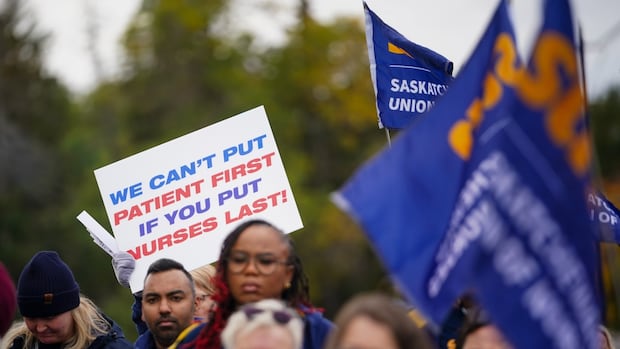The sight has become distressingly familiar in Saskatoon hospitals: patients lined up on stretchers in hallways, waiting hours—sometimes days—for proper beds, while exhausted nurses navigate the human obstacle course between emergency calls. This growing crisis has prompted the Saskatchewan Union of Nurses (SUN) to sound the alarm over what they describe as “dangerous” and “undignified” conditions plaguing the province’s healthcare facilities.
“We’ve reached a breaking point,” said Tracy Zambory, SUN president, during an emergency press conference Tuesday. “Our members report routinely caring for patients in hallways with zero privacy, inadequate monitoring capabilities, and compromised infection control—some for up to 72 hours straight.”
The union’s statements come after internal documents revealed that Saskatoon’s Royal University Hospital regularly operates at 130% capacity, with similar situations reported at St. Paul’s Hospital and Saskatoon City Hospital. These overcrowding issues have been exacerbated by staffing shortages that have left nursing units chronically understaffed, sometimes operating with half the required personnel.
One particularly troubling incident involved a patient experiencing a medical emergency while in a hallway, requiring emergency intervention with minimal privacy as other patients and visitors looked on. “Imagine having your most vulnerable moments exposed to strangers passing by,” Zambory noted. “This violates the most basic standards of patient dignity and care.”
The Saskatchewan Health Authority (SHA) has acknowledged these challenges, citing increased patient volumes, higher acuity of conditions, and ongoing recruitment difficulties as contributing factors. In a statement, the SHA indicated they are “working diligently” to address the situation, including accelerating hiring efforts and exploring options for additional capacity.
However, healthcare policy analysts suggest more fundamental changes are needed. Dr. Thomas Rennick, healthcare systems specialist at the University of Regina, points to structural issues within the province’s healthcare model.
“This isn’t just about adding more beds or hiring more staff, though both are certainly needed,” Rennick explained. “Saskatchewan needs to address bottlenecks in patient flow, expand home care services to reduce hospital dependence, and seriously invest in preventative community healthcare to reduce hospital admissions in the first place.”
The crisis extends beyond hospital walls, affecting community confidence in the healthcare system. A recent CO24 News survey found that 68% of Saskatchewan residents express decreased confidence in their ability to access timely hospital care compared to five years ago.
Meanwhile, nurses continue bearing the brunt of the system’s failures. Increasingly, SUN reports members experiencing burnout, with many considering leaving the profession altogether—a development that would only deepen the current crisis.
“Our nurses are performing heroic work under impossible conditions,” said Zambory. “But heroes eventually burn out when systems fail them consistently.”
The provincial government has promised to address the situation in upcoming budget discussions, though critics, including Opposition health critic Vicki Mowat, argue that immediate action is required. “While the government deliberates, patients are suffering in hallways today,” Mowat stated in a recent CO24 Politics interview.
For Saskatchewan residents, particularly those in urban centers like Saskatoon and Regina, the hallway medicine crisis raises profound questions about healthcare priorities in a province that prides itself on practical solutions. As winter approaches—traditionally bringing increased hospitalization rates—many wonder: at what point does a temporary crisis become acknowledged as a fundamental failure of healthcare planning, and what will it take for meaningful reform to finally take priority over stopgap measures?















